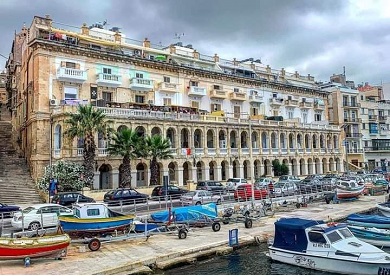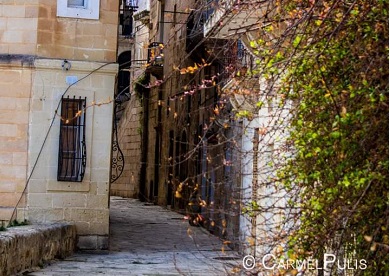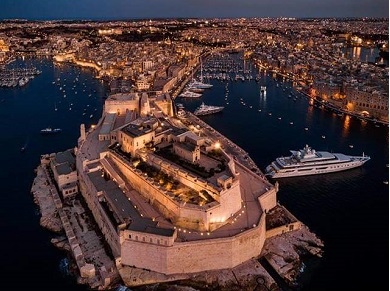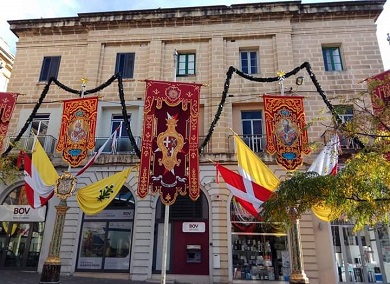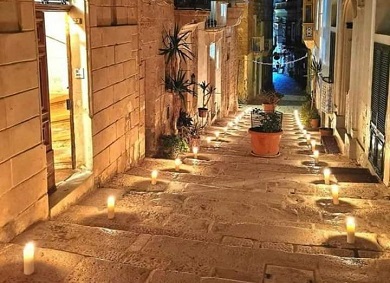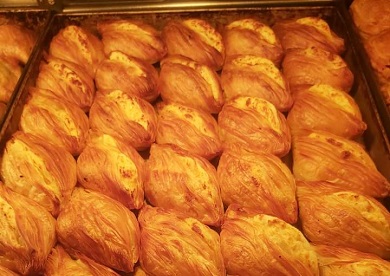The 3 Cities – Senglea - Cospicua - Vittoriosa
The Three Cities are predominantly Maritime Cities and have always been the doorway to Commerce, Migration, Encounters and Cultural Exchange in Malta’s long history. These three cities offer an awesome inspiring insight into Malta’s History. Largely unvisited by most, they offer a glimpse into Maltese History since Senglea, Cospicua and Vittoriosa have provided a home and a fortress to almost all the people who settled on the Islands of Malta.
Vittoriosa, Senglea and Cospicua, known as the Three Cities of Malta, are pieces of living history kept alive by hundreds of years of preservation, and the occasional miracle. The fortified cities sit like a trio of villages in the heart of Malta`s historic centre, directly across the Grand Harbour from Valletta.
Their harbour inlets have been in use since Phoenician times: the docks always providing a living for local people, but also leaving them vulnerable when Malta’s rulers were at war. As the first home to the Knights of St. John, the Three Cities’ palaces, churches, forts and bastions are far older than Valletta’s.
If you think of Malta and its history, the Knights of Malta and the battles with the Ottoman Empire, then it is no surprise to see that many harbours have massive walls, forts, towers and cannons. The Three Cities - Senglea, Cospicua and Vittoriosa are surrounded by a massive line of fortifications, also known as the Cottonera Lines, built by the Knights of St. John – offer a fantastic insight into the past.
Senglea - L-Isla
Senglea – known in Maltese as l-Isla, is also known as ‘Citta’ Invicta’, meaning Never Conquered. The title was given because it managed to resist the attacks from the Ottomans invasion during the Great Siege of Malta in 1565. Senglea got its name from Claude de la Sengle who built this city, and who became a Grand Master of the Order of St John in 1553. Senglea is also one of the oldest cities in Malta and is very rich in heritage. In 1798, Senglea was also involved in the blockade against the French forces, who were ousted from Malta in 1800.
During the Second World War, Senglea suffered heavy bombardments which devasted most of the city and killed many of its citizens. On the 16th of January 1941 a blitz by the German Luftwaffe on HMS Illustrious, docked at the nearby Corradino, caused 21 fatalities. The Basilica dedicated to Our Lady of Victories was severely damaged and bombarded in the same attack. King George VI visited this devastated city on the 20th of June 1943.
Senglea is particularly famous for the statue of Jesus Christ the Redeemer (Ir-Redentur tal-Isla), located in the Oratory of the Basilica dedicated to the birth of the Virgin Mary.
There are other various activities taking place throughout the year, one of the most popular being the Regatta – traditional boat races that take place in Grand Harbour twice a year, on the 31st of March and the 8th of September. The Senglea Maritime Festival is organised between May & June and celebrates the connection that Senglea has with the local Culture, History and the Maritime.
Cospicua - Bormla
Next on this tour is Cospicua, Bormla as known in Maltese. Bormla’s ancient name of Burmula has been defined as Phoenician or Punic, which indicates this city’s ancient origins meaning a High or Eminent Place. Since its height dominates over the surrounding areas, and due to its name, it is regarded as a place that stands out as a Conspicuous Place – hence the term Cospicua (as a direct translation of the site’s Phoenician name).
Cospicua’s Maritime facilities started during ancient times around the Phoenician era circa 600 B.C. Its fortification walls, constructed in 1638 to protect the town and its neighbours, Birgu and Isla, were built by the Order of St. John and took approximately 70 years to complete.
The story goes that in 1772 on seeing Bormla’s eminence and double line of fortifications that surround it, Grand Master Marc’ Antonio Zondadari, honoured the town by proclaiming it a City, hence the name ‘Citta Cospicua’ – The Conspicuous City.
The City’s fortifications, namely the Santa Margarita Lines, and the Cottonera Lines are largely intact. Saint Helen’s Gate, also known as Vilhena Gate, is a gateway which forms part of the Santa Margarita Lines which is a tourist attraction itself. The No. 1 Dock area has some Georgian architecture.
Cospicua celebrates its feast annually on the 8th of December in honour of the Immaculate Conception. In addition, Cospicua celebrates Good Friday, a celebration that began in the 18th Century and features a statue of the Resurrection of Jesus, which is traditionally carried across the City’s streets to symbolize Jesus’ triumph over death.
Vittoriosa - Il-Birgu
On to Birgu, another one of the oldest cities on the Island, which has its origins reaching back to Medieval times. Prior to the establishment of Valletta, as Capital and main City of Malta, Military powers wanting to rule the Maltese Islands would need to first conquer Birgu due to its significant position in the Grand Harbour. In fact, it served as the bases of the Order of St. John and de facto Capital City of Malta from 1530 to 1571. Birgu is well known for its vital role in the Great Siege of Malta of 1565.
Birgu occupies a promontory of land with Fort St. Angelo at its head and the City of Cospicua at its base. The entrance to Birgu is via Couvre Porte.
The Parish Church is dedicated to St. Lawrence, whose feast is celebrated annually on the 10th of August with brass band marches, processions and fireworks among others.
Apart from its prominent war history, Birgu features the historic Vittoriosa Waterfront, which includes the former Palace of the General of the Galleys and the Order of St. John’s treasury. The area was refurbished in the early 2000s, and both buildings are used for other activities: the former has been used as a casino, while the latter is home to the Malta Maritime Museum. A second Museum, the Vittoriosa 1565 Museum, is also located in the city and is dedicated to the siege of 1565.
Additional attractions include the Inquisitor’s Palace which was the seat of the Inquisition in Malta from 1571-1798. The Malta Maritime Museum featuring paintings, weapons, uniforms, anchors, maps and models dating 1530-1798. The Notre Dame Gate built by the Grand Master Fra Nicola Cottoner in 1675. The Malta at War Museum which holds an exciting exhibition about Second World War in Malta, with an underground air raid shelter. Fort St. Angelo, a historical piece of Military Architecture with its fortified walls.

